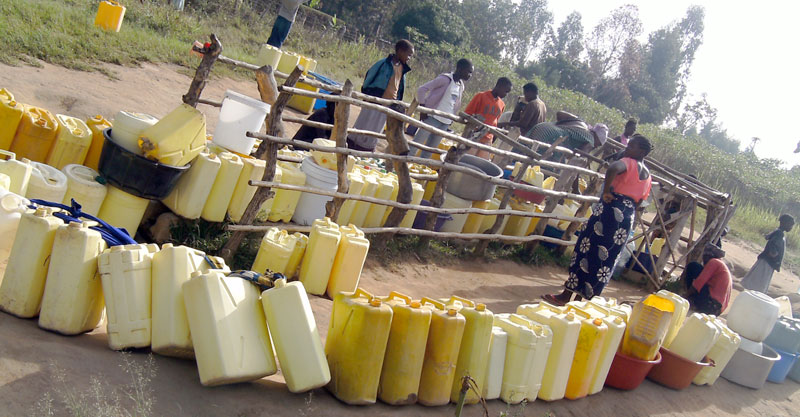News
2016 set to be hottest year, says global body
The heat that was generated by the El Nino effect in much of Sub-Saharan Africa has largely disappeared according to the World Meteorological Organisation (WMO), an indication that climate change is rapidly deteriorating.
“It is very likely that 2016 will be the hottest year on record, with global temperatures even higher than the record-breaking temperatures in 2015. Preliminary data shows that 2016’s global temperatures are approximately 1.2° Celsius above pre-industrial levels,” said WMO in a report to governments at the UN’s COP22 climate talks in Marrakesh, Morocco last week.
The combined effects of annual events such as Hurricane Matthew that battered Haiti in September, as well global warming continue to cause devastating losses to humanity including loss of life, income, property as well as other significant losses and disruptions to people’s ways of life as well as to economies in general.
“Another year, another record. The high temperatures we saw in 2015 are set to be beaten in 2016,” said Petteri Taalas, the WMO secretary-general as he presented the report to representatives of governments at COP22 negotiations in Marrakesh.
WMO’s report has been followed by another study by Australian researchers warning that extreme weather events arising from global warming, will become the new normal as early as 2025 even if steps are taken now to address the problem. But the researchers add that it is important to limit emissions now than risking further rises in global temperatures.
Extreme weather conditions have wrought havoc across many parts of the world triggering mass migrations in Asia and Africa, with the associated social, economic and political implications such as a rise in nationalist movements in Europe and America and increased demand for food aid.
WMO said: “Major droughts affected several parts of the world, most of them associated with the El Niño event, which had a big influence on precipitation. Southern Africa experienced a second consecutive bad rainy season in 2015-16. World Food Programme estimates that 17 million people will require assistance during the “lean season” ahead of the next harvest in early 2017,” said WMO.
It added: “There were a number of major heatwaves during 2016. The year started with an extreme heatwave in southern Africa, exacerbated by the ongoing drought. Many stations set all-time records, including 42.7°C at Pretoria and 38.9°C at Johannesburg on 7 January. Thailand saw a national record of 44.6°C on 28 April.
Numerous weather events had major impacts in 2016, according to the WMO. The most significant, in terms of casualties, was Hurricane Matthew in October. According to Haitian government figures at the start of November, there were 546 confirmed deaths and 438 injured as a result of the hurricane.
The Yangtze basin in China had its most significant summer floods since 1999, killing 310 people and causing an estimated US$14 billion in damage.
Flooding and landslides in Sri Lanka in mid-May left more than 200 people dead or missing, and displaced several hundred thousand. Above-normal seasonal rainfall in the Sahel led to significant flooding in the Niger River basin, with the river reaching its highest levels in about 50 years in Mali.
Heatwaves
There were a number of major heatwaves during 2016, notes the WMO: “The year started with an extreme heatwave in southern Africa, exacerbated by the ongoing drought. Many stations set all-time records, including 42.7°C at Pretoria and 38.9°C at Johannesburg on 7 January.”
Thailand too recorded a national record of 44.6°C on 28 April. Other places that witnessed record high temperatures include Phalodi in India of 51.0°C on 19 May, Mitribah (Kuwait), 54.0°C on July 21 which, subject to ratification through standard WMO procedures, will be the highest temperature on record for Asia. The following day, 53.9°C was recorded at Basra (Iraq) and 53.0°C at Delhoran (Iran).
Wildfires
The most damaging wildfire in Canadian history occurred in May in the city of Fort McMurray in Alberta, according to WMO.
“The fire ultimately burned an area of about 590,000 hectares and was Canada’s most costly natural disaster. It led to the total evacuation of the city and ultimately destroyed 2,400 buildings, causing 4 billion Canadian dollars (US$3 billion) in insured losses and several billion more in other losses.”
Humanitarian crises
According to United Nations High Commissioner for Refugees (UNHCR), in 2015 there were 19.2 million new displacements associated with weather, water, climate and geophysical hazards in 113 countries, more than twice as many as for conflict and violence.
Of these, weather-related hazards triggered 14.7 million displacements. South and East Asia dominated in terms of the highest absolute figures, but no region of the world was unaffected. Equivalent data for 2016 are not yet available.
Extreme weather and climate related events influenced by the strong El-Niño in 2015/2016 had significant negative impacts on agriculture and food security. More than 60 million people around the world were affected by these events, according to the Food and Agriculture Organization.
WMO says it will boost its capacity for an early warning system as a means to strengthening its ability to facilitate adaptation to climate change.
“The WMO is working to improve monitoring of greenhouse gas emissions to help countries reduce them. Better climate predictions over timescales of weeks to decades will help key sectors such as agriculture, water management, health and energy plan for and adapt to the future.”
WMO has also called for strengthening of early monitoring systems especially in developing countries.
Comments



















